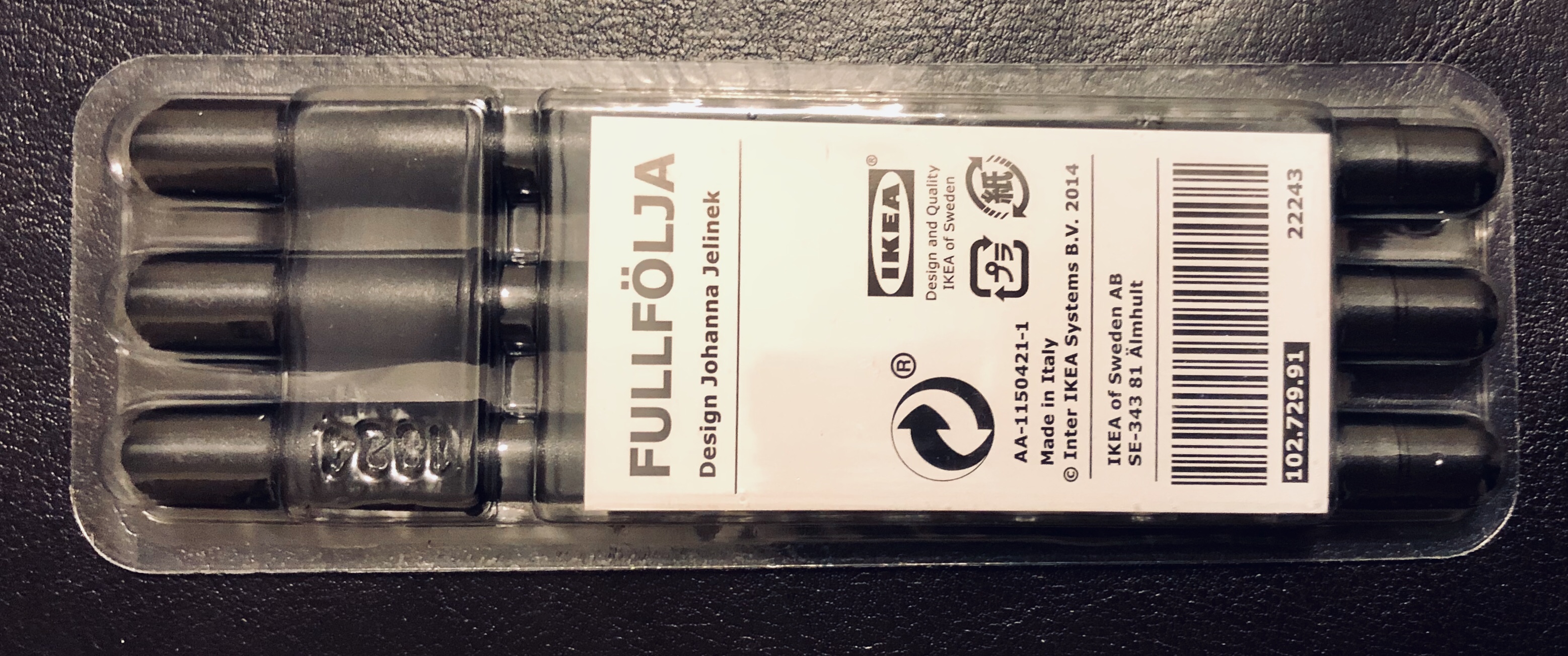
Shopping at IKEA can actually be pretty fun. The size and layout of these stores essentially make it a day trip; one full of poor attempts to pronounce Swedish words, small arguments about kitchen decor, and tasty meatball lunches. As I cut through the stationery department on my most recent visit, I found stacks of gel pens with the name Fullfölja – I told you that this stuff is hard to pronounce – and grabbed a 3-pack without hesitation because, well, why not? Impulse buying is an IKEA staple.
As you’d expect from an IKEA design, the pen is simple and straightforward. It’s about 5.5-inches long with an all-black, rounded barrel and a short cap. There is no clip, and the pen is not refillable. For the tip, I couldn’t find any sizing information, but the pen produces a fairly thick line. So I’d wager that the tip size is about 1.0mm. With such a thick line, the ink does smear easily, but it also produces a satisfyingly dark, black ink.

I’ll admit that there’s no shortage of gel pens that, for a similar price, are better than the Fullfölja , but strangely, I like these pens a lot. The design of the pen captures the IKEA brand so perfectly that using one gives me a small hit of the fun/stressful rush you get while shopping at an IKEA. They remind me of the Baron Fig Squire, albeit a plastic version, which I don’t really mind losing if it happens to roll off my table at a coffee shop.
I’m certainly not going to encourage anybody to go out of their way to find these pens, and the prices I’ve found online are ridiculous. But if you happen across these during your next IKEA visit, you might as well toss a 3-pack in your bag for $2.50. I think they’re worth it.













